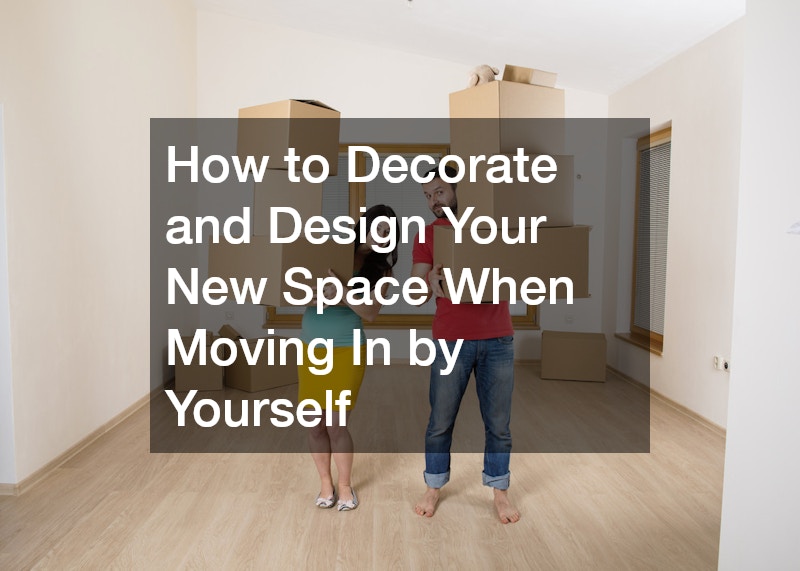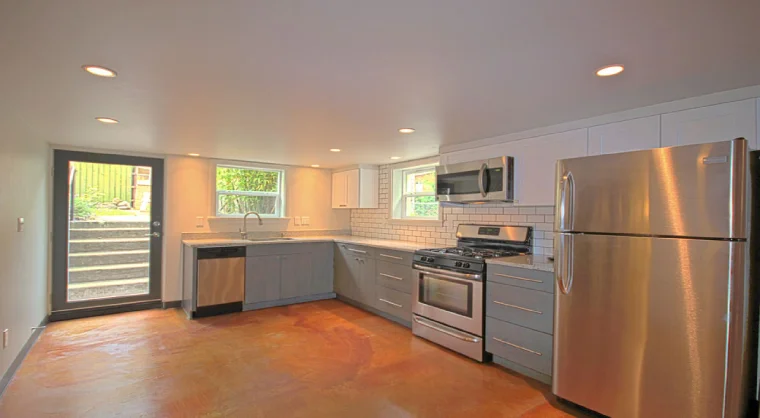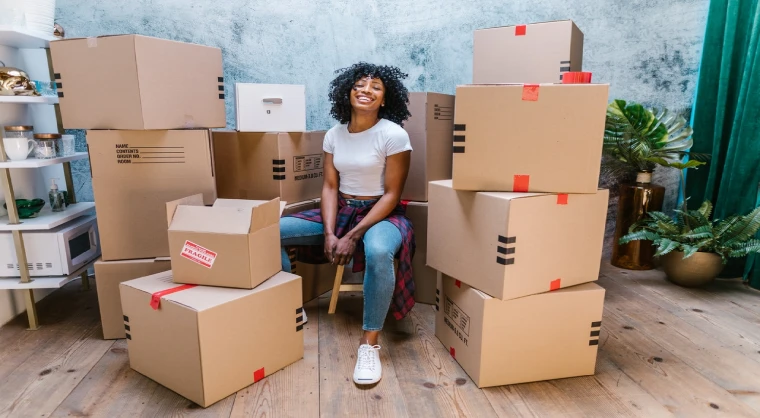Welcome to the exciting journey of living independently! Moving in by yourself is a significant milestone, offering you the freedom to create a space with interior design that truly reflects your personality and lifestyle. However, decorating and designing your new home can feel overwhelming. Where do you start? What furniture should you invest in? How can you create a stylish and functional space on a budget?
This guide will walk you through every step of the process, answering the most common questions about interior design. Whether you’re moving into a studio apartment or a spacious house, these tips will help you transform your new place into a cozy, stylish, and functional home.
1. How Do I Plan the Layout of My New Space?
Before you start decorating, it’s crucial to plan your layout strategically. Proper space planning ensures that your home feels organized, spacious, and functional.
a. Assessing the Dimensions
Start by measuring your new space. Take note of room sizes, window placements, and existing features like outlets and built-in storage. Understanding these dimensions will help you select appropriately sized furniture.
b. Prioritizing Function Over Form
When moving in by yourself, functionality should be a top priority. Think about how you’ll use each area—whether it’s a workspace, dining nook, or relaxation zone—and arrange furniture accordingly.
c. Choosing a Focal Point
Every room benefits from a focal point, whether it’s a fireplace, a large piece of artwork, or a statement furniture piece. A well-defined focal point helps ground the space and guide your design choices.
d. Creating a Mood Board
Use apps like Pinterest or physical swatches to create a mood board. This helps you visualize how different colors, textures, and styles will come together.
e. Mapping Out High Traffic Areas
Leave enough space for movement, especially in small apartments. Avoid blocking doorways and ensure furniture placement allows for easy navigation.
2. What Are the Essential Furniture Pieces I Need?
When moving in by yourself, choosing the right furniture is key to comfort and functionality. Focus on versatile, high-quality pieces that serve multiple purposes.

a. Investing in a Quality Bed
A good night’s sleep is essential. Consider visiting a mattress outlet to find high-quality mattresses at a more affordable price. A comfortable mattress will make a significant difference in your overall well-being.
b. Versatile Living Room Seating
Opt for a comfortable sofa or sectional that can double as a guest bed. Modular seating is great for small spaces, allowing you to reconfigure the arrangement as needed.
c. Multi-functional Dining Table
A small, extendable dining table can serve as a dining space, workspace, or even a crafting station.
d. Storage Solutions for Small Spaces
Invest in furniture with built-in storage, such as ottomans, beds with drawers, and wall-mounted shelves.
e. Workspace Essentials for Home Offices
If you work from home, selecting the right office furniture is crucial. A sturdy desk, an ergonomic chair, and proper lighting can boost productivity.
3. How Can I Decorate on a Budget?
Decorating doesn’t have to break the bank. There are plenty of ways to style your home affordably.
a. Thrifting and Upcycling
Check out thrift stores, flea markets, and online marketplaces for budget-friendly furniture and decor. A fresh coat of paint or new hardware can completely transform second-hand pieces.
b. DIY Decor Projects
From handmade wall art to customized shelves, DIY projects add a personal touch without costing a fortune. Consider updating your shower tile with peel-and-stick options or regrout old tiles to give the bathroom a much-needed refresh.
c. Prioritizing Purchases
Make a list of must-haves and focus on those first. Start with basics like a bed, couch, and dining table before splurging on decorative items.
d. Utilizing Sales and Discounts
Shop during major sales events and check out discount retailers for quality pieces at lower prices.
e. Opting for Minimalist Designs
A minimalist approach not only saves money but also prevents clutter. Invest in a few statement pieces rather than overfilling your space.
4. What Color Schemes Work Best for Small Spaces?
Color plays a crucial role in how a room feels. Choosing the right palette can make your space appear larger and more inviting, which is crucial when moving in by yourself.

a. Understanding Color Psychology
Colors impact mood and energy. Visit a local tile store to explore different color options for your flooring and walls.
b. Light and Neutral Tones
Lighter shades like white, beige, and pastel tones create an airy, open feel.
c. Incorporating Accents for Personality
Use accent walls, colorful pillows, or bold artwork to add personality without overwhelming the space.
d. Contrast and Balance with Bold Colors
If you love vibrant hues, balance them with neutral tones to prevent the space from feeling too chaotic.
e. Using Textiles to Add Depth
Rugs, curtains, and blinds can add texture and warmth while complementing your chosen color scheme.
5. How Do I Balance Style and Functionality?
A well-designed home should be both beautiful and practical.
a. Multi-functional Furniture Pieces
Look for furniture that serves more than one purpose, such as a sofa bed or a dining table with storage.
b. Smart Storage Ideas
Use cabinets, floating shelves, and under-bed storage to keep your space tidy.
c. Stylish Organizational Tools
Decorative baskets, wall hooks, and storage benches help maintain order without compromising aesthetics.
d. Personalizing Functional Spaces
Add personal touches, such as framed photos or decorative trays, to everyday spaces.
e. Maintaining Room Flow
Ensure furniture placement allows for comfortable movement throughout the space.
6. What Are the Common Decorating Mistakes to Avoid?
Avoiding these mistakes when moving in by yourself will help your home feel more cohesive and comfortable.
a. Ignoring Scale and Proportion
Make sure furniture sizes match your space’s dimensions.
b. Overcrowding with Accessories
Less is more when it comes to decorating.
c. Mismatched Styles and Themes
Stick to a consistent theme for a harmonious look.
d. Poor Lighting Choices
Consult an electrician to install layered lighting for a cozy ambiance.
e. Avoiding Experimentation with Patterns
Mix patterns carefully to maintain visual balance.
7. How Can I Incorporate My Personality Into My Home Design?
Your home should reflect who you are, especially when moving in by yourself.

a. Displaying Personal Mementos
Showcase souvenirs, family photos, or collections.
b. Choosing Art That Speaks to You
Invest in artwork that resonates with your style.
c. Using Colors You Love
Choose shades that make you feel at home.
d. Personalizing Furniture Choices
Customize pieces to reflect your taste.
e. Creating a Signature Style
Mix elements that define your personal aesthetic.
8. How Do I Make the Best Use of Natural Light?
Natural light is one of the most valuable elements in home design. It enhances mood, makes spaces feel more open, and even helps save on electricity bills, which is crucial to consider when moving in by yourself. When moving in by yourself, optimizing natural light will make your home feel more inviting and refreshing.
a. Positioning Furniture for Light Accessibility
The way you arrange furniture can significantly impact how much natural light filters through your space. If possible, place seating areas near windows to maximize exposure to daylight. This is especially useful in living rooms, where you can position sofas and chairs to enjoy the sunlight while reading or relaxing. In your bedroom, consider positioning your bed so that you wake up to natural light, creating a gentle and energizing start to your day.
b. Selecting Light-enhancing Window Treatments
Heavy, dark curtains can block natural light, making your space feel smaller and darker. Instead, opt for sheer curtains or adjustable blinds that allow you to control the amount of light entering your home. Roman shades, light-filtering roller blinds, or layered drapery can offer privacy without compromising brightness. If you need blackout curtains for sleeping, pair them with a lighter, more transparent layer for daytime use.
c. Using Mirrors to Reflect Light
Mirrors are a well-known trick for increasing brightness in a room. By placing a large mirror opposite a window, you can reflect sunlight into darker corners and make the space appear larger. A gallery wall of smaller mirrors can create the same effect while adding a decorative touch. Additionally, mirrored furniture or reflective surfaces, such as a glass coffee table, can subtly enhance the light in a room.
d. Opting for Light-colored Walls and Ceilings
Your choice of paint color plays a major role in how light interacts with a room. Light shades such as white, soft grays, or pastels help to reflect rather than absorb light, making a space feel more open. If you’re looking to add depth without darkening the room, consider an accent wall in a muted shade or a subtle pattern.
e. Incorporating Glass and Reflective Surfaces
Glass furniture, such as a transparent dining table or shelving, allows light to pass through instead of creating visual barriers. Similarly, using glossy countertops in materials like quartz or marble can reflect light and contribute to a brighter atmosphere. Even small touches, such as metallic decor accents, glossy tiles, or acrylic furnishings, can contribute to an airier feel.
By making these adjustments, your home will feel brighter, more open, and naturally inviting—without the need for excessive artificial lighting.
9. How Can I Make Small Spaces Feel Larger?
When moving in by yourself, especially into a small apartment or studio, space optimization is key. Even if square footage is limited, you can use smart design tricks to create the illusion of a larger, more open home.

a. Implementing Vertical Storage Solutions
When moving in by yourself, remember that maximizing vertical space is crucial for small homes. Instead of relying solely on floor storage, take advantage of walls. Wall-mounted shelves, tall bookcases, and floating cabinets can free up valuable floor space while offering ample storage. Additionally, incorporating hooks, pegboards, and over-the-door organizers can help keep clutter off surfaces and maintain an open feel.
b. Choosing Furniture That Fits the Space
Oversized furniture can overwhelm a small room, making it feel cramped. When selecting pieces, consider proportionality—opt for a compact sofa, slim-profile chairs, and a small dining table. Look for furniture that serves multiple purposes, such as nesting tables or foldable chairs, so that you can adjust your layout when needed.
c. Utilizing Transparent and Leggy Furniture
Furniture with exposed legs or transparent materials, like acrylic or glass, creates a sense of openness. For instance, a glass coffee table allows light to pass through, preventing visual clutter. Similarly, a sofa or bed with visible legs provides the illusion of more floor space compared to solid, heavy-bottomed pieces.
d. Applying Strategic Lighting Techniques
Proper lighting can make a significant difference in how spacious a room feels. Instead of relying solely on overhead lights, incorporate layered lighting with wall sconces, floor lamps, and LED strips. Uplighting, such as placing lamps to reflect off walls or ceilings, can make a space feel taller and more expansive. Dimmable lighting also allows you to create different atmospheres for various times of the day.
10. How Do I Ensure Comfort in My New Home?
Comfort is essential when moving in by yourself, as your home should be a retreat from the outside world. From cozy textures to practical temperature control, ensuring a comfortable environment enhances both physical relaxation and mental well-being.
a. Selecting Comfortable Furnishings
When choosing furniture, prioritize comfort as much as aesthetics. A plush sofa, a cushioned armchair, and a well-padded headboard can make a significant difference in how inviting your home feels. If you enjoy lounging, consider a sectional with deep seating or an oversized bean bag for added coziness. Layering soft throw blankets and textured cushions can further enhance comfort.
b. Creating Cozy Nooks
A cozy nook can become your go-to space for relaxation, reading, or unwinding after a long day. Designate a corner with a comfortable chair, a soft rug, and warm lighting to create a snug retreat. Adding a side table with books, scented candles, or a cup of tea makes the space even more inviting. If space allows, a small hammock or a window seat can serve as a perfect cozy hideaway.
c. Maintaining a Clutter-free Environment
A cluttered space can feel overwhelming and stressful. To maintain a serene and inviting atmosphere, incorporate good organizational habits. Use labeled storage bins, drawer dividers, and closet organizers to keep items in their designated places. Having the right cleaning supplies on hand ensures that you can quickly tidy up and maintain a fresh, clutter-free home.
By focusing on these comfort-enhancing strategies, your new home will feel like a sanctuary—a place where you can truly relax, recharge, and enjoy your independence.
Moving in by yourself is an exciting opportunity to create a home that is uniquely yours. By balancing style, functionality, and budget-friendly choices, you can craft a space that feels comfortable and inviting. Happy decorating!





